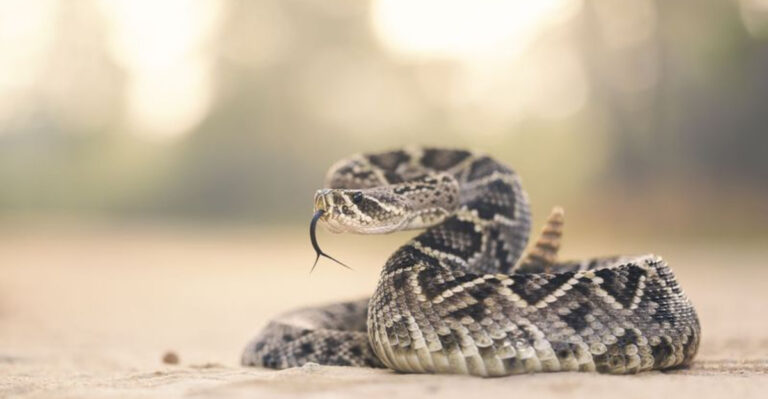Unraveling The Mystery: Just How Massive Was The Titanoboa?

Imagine a snake so enormous it could crush and eat a crocodile for breakfast! The Titanoboa, which lived about 60 million years ago, was the largest snake ever discovered.
This prehistoric monster has fascinated scientists and snake enthusiasts alike since its fossils were first unearthed in Colombia’s coal mines in 2009.
Let’s explore just how massive this ancient serpent really was and what its incredible size meant for its world.
1. The Titanoboa’s Incredible Size
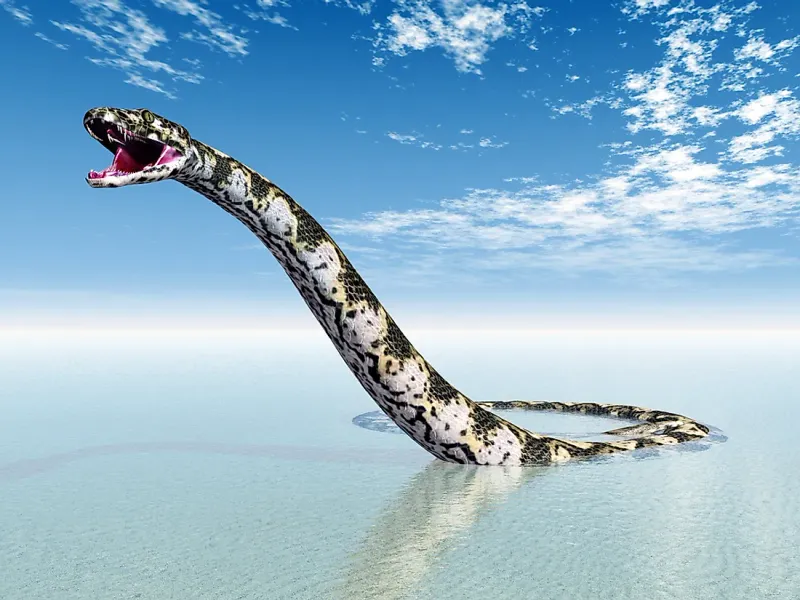
The Titanoboa wasn’t just big – it was colossal! This prehistoric serpent stretched up to 42 feet long, roughly the length of a school bus. That’s more than four times longer than today’s largest snakes.
Weight-wise, scientists estimate this behemoth tipped the scales at over 2,500 pounds. That’s heavier than a small car! Its massive body could reach nearly three feet in diameter – imagine a snake as thick as a telephone pole slithering through ancient swamps.
For perspective, if you lay down on the ground, this snake could easily stretch across several people placed head-to-toe.
2. How Big Was The Titanoboa, Really?

Scientists determined Titanoboa’s true size by studying vertebrae fossils discovered in Colombia’s Cerrejón Formation. These backbone pieces tell an amazing story – each vertebra was roughly the size of a grapefruit!
Using mathematical formulas that relate vertebrae size to total length, researchers calculated that this monster reached about 42-45 feet. The snake’s head alone was approximately the size of a man’s torso, with jaws that could open wide enough to swallow a human whole.
For comparison, if Titanoboa slithered into a two-story house, its head could peek out a second-floor window while its tail remained on the ground!
3. Comparing Titanoboa To Modern Snakes

The green anaconda, today’s heavyweight champion of snakes, looks like a garden worm next to Titanoboa! Modern anacondas typically reach 15-20 feet and weigh up to 550 pounds – impressive until you realize Titanoboa was more than twice as long and five times heavier.
Reticulated pythons, the longest living snakes today at about 33 feet maximum, still fall short of Titanoboa’s 42-foot frame. Even the heaviest recorded snake in history – a 550-pound python kept in captivity – was a lightweight compared to Titanoboa’s 2,500-pound bulk.
The thickness difference is equally shocking – Titanoboa’s body was nearly three times the diameter of today’s largest snakes!
4. The Titanoboa’s Record-Breaking Length
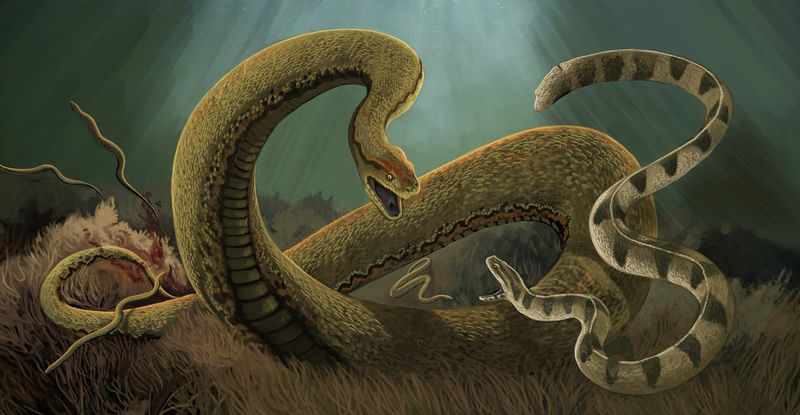
At 42 feet long, Titanoboa holds the undisputed title for the longest snake ever to slither across Earth. Stretched out completely, this prehistoric giant would span across a full basketball court from baseline to baseline with room to spare!
The snake’s exceptional length gave it unique hunting advantages. Researchers believe Titanoboa could wrap multiple coils around prey, applying crushing pressure from several directions simultaneously.
Its massive length also meant Titanoboa could cross rivers and small lakes with ease, keeping its head above water while its body created a living bridge. When hunting in water, this length allowed it to ambush prey from unexpected angles, moving with surprising speed despite its enormous size.
5. What Titanoboa’s Size Tells Us About Its Power

The sheer mass of Titanoboa translated into bone-crushing strength. Scientists estimate this mega-snake could exert constriction forces exceeding 400 pounds per square inch – enough pressure to crush bones to splinters and rupture internal organs instantly.
Its massive jaw muscles could unhinge to swallow prey the size of a cow whole. The snake’s size required an enormous heart to pump blood through its 42-foot body, giving it tremendous endurance during hunts.
Titanoboa’s massive size also meant it retained body heat efficiently, allowing it to maintain higher activity levels than smaller snakes. This thermal advantage, combined with its strength, made Titanoboa virtually unstoppable in its ancient ecosystem – a true apex predator with few rivals.
6. How The Titanoboa’s Size Made It The Ultimate Predator
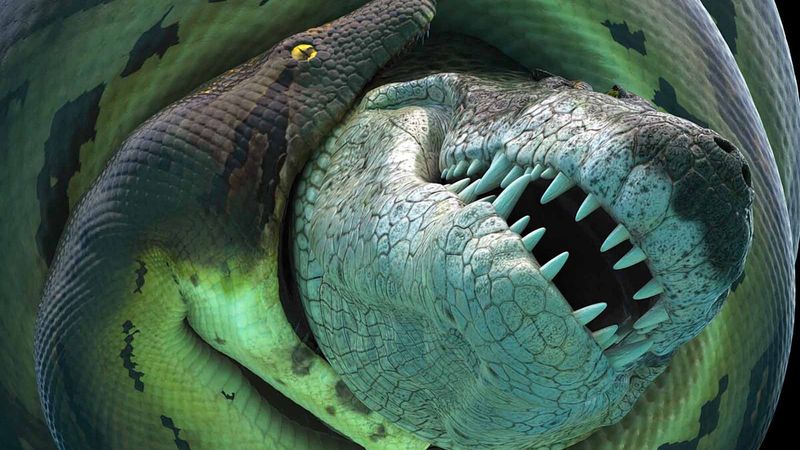
Titanoboa’s enormous size crowned it king of the ancient Colombian rainforest. Nothing could challenge this monster – not even the massive crocodilians that shared its habitat. Fossil evidence shows Titanoboa regularly feasted on car-sized prehistoric crocodiles!
Its hunting technique was brutally effective. Titanoboa would ambush prey from murky waters, striking with lightning speed despite its size. Once caught, victims were squeezed with over 400 pounds of pressure per square inch – far more crushing force than today’s strongest constrictors.
The snake’s massive girth allowed it to swallow enormous meals whole, sustaining it for months between feedings. This feeding efficiency meant Titanoboa needed fewer successful hunts to survive.
7. Could The Titanoboa Live Today Based On Its Size?
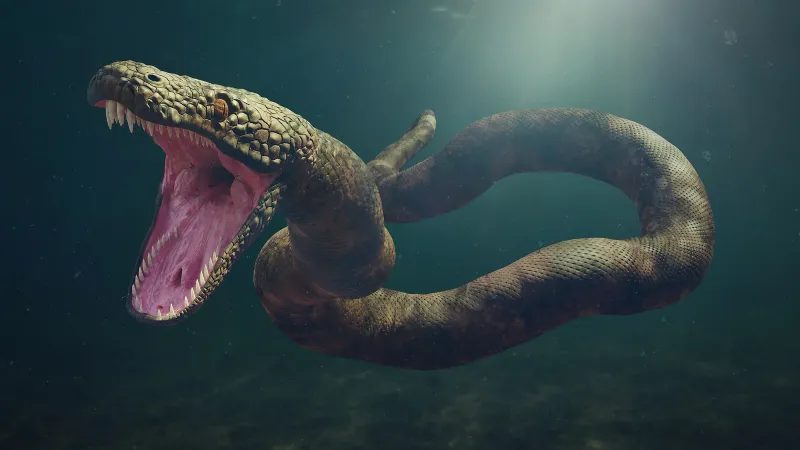
Titanoboa’s massive size would make survival nearly impossible in today’s world. This giant required extremely specific conditions, particularly the super-hot climate of the Paleocene epoch when global temperatures were significantly higher than today.
As a cold-blooded reptile, Titanoboa needed external heat to maintain its metabolism. Scientists calculate that the ancient Colombian rainforest must have maintained average temperatures around 90°F to support a snake of this size.
Modern habitats simply don’t provide the combination of consistent high temperatures, abundant large prey, and undisturbed territory that this 2,500-pound giant would need. Additionally, human development has fragmented potential habitats, making it impossible for such an enormous predator to find sufficient hunting grounds.
8. The Size Of Titanoboa: How It Shaped Its Habitat

As the largest predator in its ecosystem, Titanoboa’s massive size influenced everything around it. Smaller animals evolved heightened awareness and escape strategies, while competing predators avoided territories where this giant hunted.
The snake’s enormous appetite meant it regulated prey populations across its range. One Titanoboa might consume thousands of pounds of meat yearly, preventing herbivore overpopulation that could damage plant communities.
Even in death, a 2,500-pound Titanoboa carcass would have created a massive nutrient pulse, feeding scavengers and eventually enriching the soil. The snake’s burrows and nesting sites likely created unique microhabitats for smaller creatures, similar to how modern gopher tortoise burrows support dozens of other species.
9. What Fossils Reveal About Titanoboa’s Massive Body

The coal mines of Cerrejón, Colombia yielded an astonishing treasure – over 100 Titanoboa vertebrae and rib fossils. These bones tell an incredible story of evolutionary gigantism rarely seen in reptiles.
The vertebrae show specialized adaptations for supporting enormous weight. Extra-thick neural spines provided attachment points for powerful muscles needed to move such a massive body. Microscopic analysis of bone structure reveals incredibly dense bone tissue, necessary to withstand the stresses of the snake’s own weight.
Fossil skin impressions, though rare, suggest Titanoboa had thick, heavily-scaled skin that provided protection and reduced water loss. The combination of these fossil discoveries allows paleontologists to create accurate reconstructions of this prehistoric giant’s appearance and capabilities.
10. How Big Was The Titanoboa Compared To Other Prehistoric Creatures?
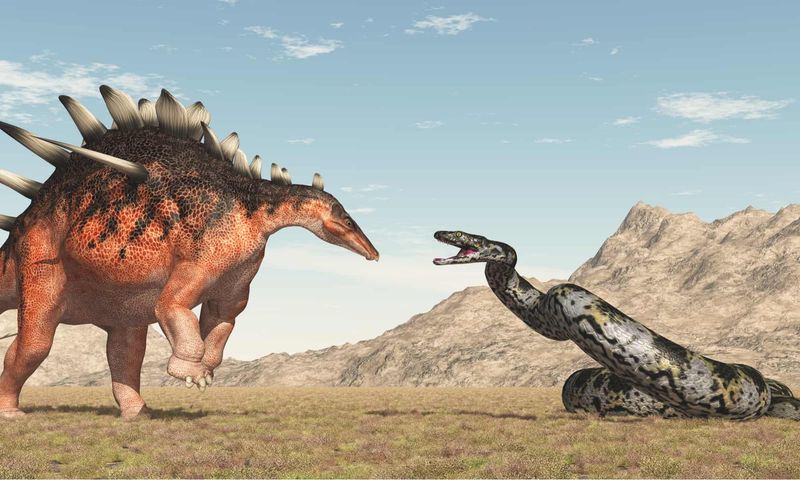
While dinosaurs like T. rex overshadowed Titanoboa in overall size, this snake was actually heavier than many famous dinosaurs! At 2,500 pounds, Titanoboa outweighed Velociraptors (150 pounds) and even adult Deinonychus (350 pounds) many times over.
Among its contemporaries in the Paleocene epoch (after dinosaurs), Titanoboa reigned supreme. It dwarfed primitive mammals like Pantolambda (bear-sized) and easily outmatched other reptiles like Carbonemys, a car-sized turtle that shared its habitat.
The snake’s 42-foot length rivaled some medium-sized sauropod dinosaurs and exceeded that of most marine reptiles like mosasaurs. Among prehistoric snakes, nothing came close – Gigantophis, the second-largest known fossil snake, measured only 33 feet, making Titanoboa nearly 30% longer.
11. The Titanoboa’s Size: Key To Its Survival

Titanoboa’s massive size wasn’t just impressive – it was essential for survival! The snake evolved during a period when Earth’s temperatures were significantly higher than today, with tropical regions reaching consistent 90°F averages.
Being so large gave Titanoboa a crucial advantage called thermal inertia. Its huge body mass retained heat efficiently, maintaining optimal temperature even when nighttime temperatures dropped. Smaller snakes would cool down faster, becoming sluggish and vulnerable.
This gigantism also protected adult Titanoboas from predation. While young snakes faced threats from crocodilians and large birds, full-grown specimens had absolutely no natural predators. The combination of perfect climate conditions and lack of competition allowed this super-sized serpent to evolve and thrive for millions of years.
12. Why The Titanoboa’s Size Is So Fascinating

Titanoboa’s incredible size captures our imagination because it pushes the boundaries of what seems possible. The idea of a snake longer than a school bus and heavier than a car feels almost mythical – yet the fossils prove this monster was real!
This snake’s existence challenges our understanding of animal physiology. Scientists are still debating how such a massive reptile could move efficiently, regulate its body temperature, and sustain its enormous appetite.
Titanoboa also provides a window into Earth’s past climate. Its size required temperatures much warmer than today’s, offering valuable insights into ancient ecosystems. For snake enthusiasts and casual observers alike, Titanoboa represents nature’s capacity for producing truly extraordinary creatures, making us wonder what other amazing animals might have existed that we haven’t discovered yet.





